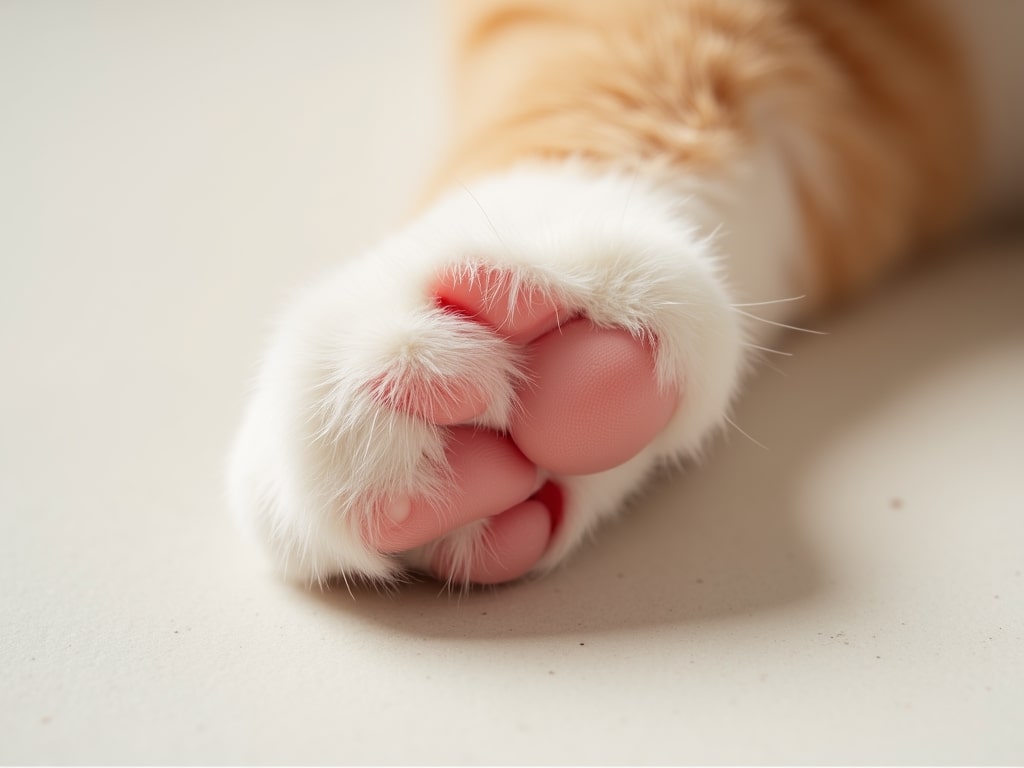A cat’s paw is a marvel of natural engineering, designed to support a feline’s stealth, agility, and survival. This intricate anatomical structure enables cats to climb, hunt, and navigate their surroundings with unmatched precision. This article explores the complex components of the feline paw and their role in enhancing a cat’s lifestyle.
Understanding the Anatomy of a Cat’s Paw
1. Paw Pads: Nature’s Cushion
The soft, spongy pads on a cat’s paw are essential for shock absorption and stealth. Composed of thickened skin and fat, these pads reduce the impact during leaps and soften footsteps, aiding in silent movement. Each paw has multiple pads:
- Digital Pads: Found under each toe, these help distribute weight evenly.
- Metacarpal/Metatarsal Pad: The largest pad located in the center, crucial for stability.
- Carpal Pad: Positioned on the back of the forelimb, it provides grip during descents.
Additionally, the pads contain sweat glands that help regulate body temperature and leave scent markers.
2. Retractable Claws: Tools of Precision
Cats’ retractable claws are one of their defining features. These claws serve multiple purposes:
- Hunting and Defense: Sharp claws grip prey and defend against threats.
- Climbing: Their ability to grip surfaces allows for effortless climbing.
- Grooming: Claws help remove dirt and debris from fur.
When not in use, the claws retract into protective sheaths, preventing wear and tear.
3. Bones and Ligaments: A Framework of Flexibility
The feline paw consists of multiple small bones connected by ligaments, providing both flexibility and strength. These enable:
- Fine Motor Control: Essential for activities like batting at toys or gripping prey.
- Extended Range of Motion: Supporting dynamic movements like jumping and twisting.
This skeletal structure is a testament to evolutionary adaptation.
Functions of the Feline Paw in Everyday Life
1. Hunting and Survival
The cat’s paw is a predator’s ultimate tool. Silent movement and powerful leaps allow cats to stalk prey with precision. The combination of paw pads, claws, and flexible joints ensures efficiency in capturing food.
2. Communication and Territory Marking
Paws play a key role in communication. Sweat glands in the pads release pheromones, leaving scent trails that mark territory. Scratching surfaces further reinforces these signals, communicating dominance and boundaries to other animals.
3. Grooming and Self-Care
Cats use their paws to clean hard-to-reach areas. The claws aid in detangling fur, while the paws bring saliva to specific spots, maintaining hygiene and distributing natural oils for a healthy coat.
4. Balance and Navigation
Whether walking across a narrow ledge or scaling heights, a cat’s paws are crucial for maintaining balance. The tactile receptors in the pads provide sensory feedback, helping cats judge surfaces and adjust movements accordingly.
Unique Features of the Feline Paw
1. Sensitive Tactile Receptors
The pads contain nerve endings that act as sensory tools, allowing cats to detect textures, vibrations, and pressure changes. This sensitivity helps them navigate various terrains and assess their environment.
2. Seasonal Adaptations
During colder months, the fatty tissue in the paw pads provides insulation, while sweat glands work overtime in hotter weather to keep cats cool. This adaptability makes feline paws suitable for diverse climates.
3. Dominant Paw Preference
Interestingly, cats exhibit a preference for one paw over the other, similar to human handedness. Studies reveal that male cats often favor their left paw, while females lean toward their right.
Key Takeaways
- Multifunctional Design: A cat’s paw combines strength, flexibility, and sensitivity to support diverse activities.
- Hunting Mastery: Silent movement and sharp claws make them adept hunters.
- Communication Tool: Paws leave scent markers, establishing territorial boundaries.
- Natural Adaptation: Seasonal changes and nerve sensitivity highlight their evolutionary success.
Frequently Asked Questions
1. Why are cat claws retractable?
Retractable claws protect them from wear and tear when not in use, ensuring they remain sharp for hunting, climbing, and self-defense.
2. How do cats maintain balance with their paws?
Cats rely on the tactile receptors in their paw pads and the flexible skeletal structure of their limbs to adjust to surfaces and maintain balance.
3. Can a cat’s paw heal quickly from injuries?
Yes, but due to their active use, proper care and veterinary attention are crucial for faster healing and preventing infections.
The feline paw is an extraordinary blend of form and function, perfectly crafted for a cat’s unique lifestyle. Its adaptability, sensitivity, and strength make it one of nature’s finest tools for survival.

